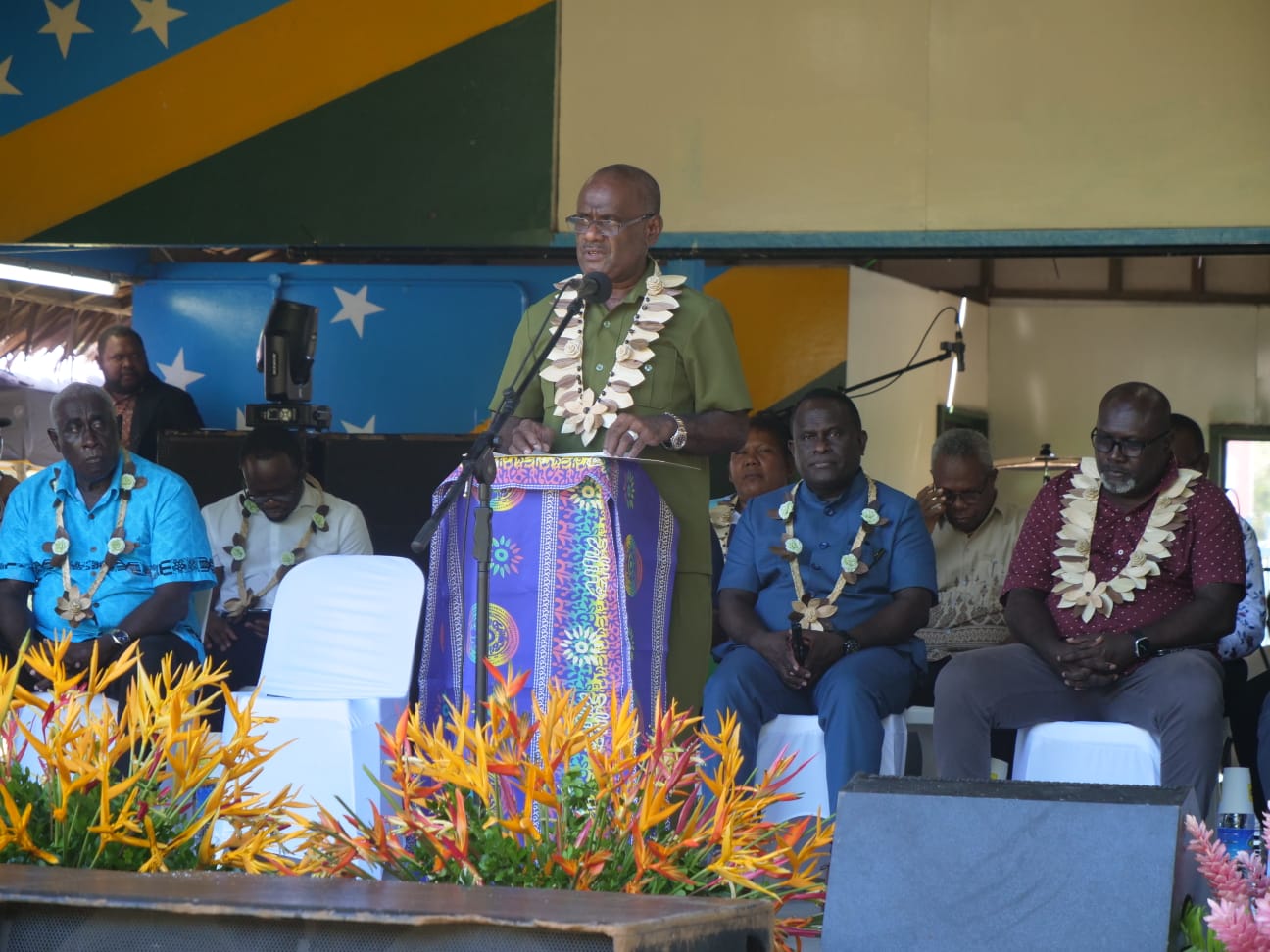BY JOHN HOUANIHAU
Economic growth in the Solomon Islands has been described as ‘taking one step forward and two steps backwards’.
Central Bank of Solomon Islands CBSI) Governor Dr Luke Forau said this when he launched the 2024 CBSI Annual Report and reflecting on the economic recovery five years after COVID-19.
The Governor said that the country has a long way to go, despite progress having been made.
“Before we return to our theme, let’s take a look at where we stand, five years after the pandemic. we’ve made progress. But we still have a long way to go. Between 2014 and 2019, our economy grew at an average of 2.7%. In 2020, it fell by 3.4%. A modest recovery followed in 2021 with 2.6% growth.
“Now, growth hovers around 2.9%, on average better than our worst moments, but still far from our full potential. However, much of that growth came from a single event — the Pacific Games. Strip that away, and it becomes clear: we are not growing fast enough, not broadly enough. We are growing at a pace with one-step forward and two steps backwards. And if you look carefully at our current state of play, we are reversing in development,” he said.
The theme for the lunch was: “Building the future we want through determination with a clear goal and a shared ownership that calls for collective urgent action to deliver excellence”.
“To realise the future we envision for our country, we need more than predictions; we need a clear plan and commitment,” stressed Forau.
He explained that two possible growth paths ahead for the country, the baseline scenario (1) and the ambitious scenario.
“The ambitious scenario is not wishful thinking. It is bold, yes, but it is achievable. We have achieved even higher growth rates before. Now, it calls for a clear goal and ownership, dedication, coordination, and strong commitment to urgently deliver, just as the Pacific Games demanded of us,’’ he said.
“Let’s examine each scenario. These inferences will impact our well-being. under scenario 1, more of the same (or status quo), the economy remains on its current path, with growth hovering at around 2.5% annually through to 2030. Agriculture sees production level growing at the same current pace, with some gains in palm oil output, but with continued underutilisation of resources in the cocoa and copra sectors. Manufacturing and trade expand slightly, but not fast enough to lift families out of poverty or meet the rising demand for employment opportunities for our growing youth population,” explain Forau.
He said that scenario 1 does not spell failure for the country, but it lies far below the country’s potential, and it is not transformative in the manner the current economic and historical junctures require.
“This growth model has also historically been centred around a minute number of core commodities, and it has thus been far from inclusive. We must also address, and indeed capitalise on, our high population growth in our economic thinking and planning, and I am afraid we will not be able to do so under this ‘business-as-usual’ scenario,” said Forau.
He said that under scenario 2, an ambitious, bold, coordinated, is what a national push the country must aim for.
“Under this scenario, we target the economy to achieve a sustained growth of at least 5% each year. This would triple Agricultural output, with Cocoa production increasing from 5,000 tons to 15,000 tons, Copra output increasing from 10,000 tons to 30,000 tons, Coconut oil production expanding from 5,000 tons to 15,000 tons, and Palm oil output tripling to 72,000 tons each year.”
He said that this would require a shift towards value-added processing and the processing of raw exports to finished products, such as turning copra into coconut oil, cocoa into chocolate, lifting manufacturing beyond the one-billion-dollar mark.
“Trade opportunities will expand, introducing our unique products to new markets across the Pacific and beyond when Solomon Islands becomes a renowned processing hub, where the raw products with which nature bountifully bestows us are transformed by our hands and our machines into beautifully crafted manufacturing goods,” he said.
However, he said that this won’t happen by chance. It will take deliberate, sustained, and united action.




